During the past few hours Bandai Namco has officially started the network test of Elden Ring, the new open world dark fantasy game from FromSoftware. It was in effect a closed beta, in which only a certain number of selected users were able to test the new playful mixture designed by Hidetaka Miyazaki and company. We have had the opportunity to participate in this Elden Ring test and we are ready to tell you about our adventures in the lands of the Tomb.
Elden Ring: our impressions of the network test
As soon as the closed beta started, we immediately found ourselves faced with a very difficult choice: that of the decision of the class with which to start the game. We immediately excluded physical classes, such as the Warrior and the Barbaro, as our interest was more focused on finding out how magic works in this new fantasy world. This is why we ultimately opted for the Prophet, the equivalent of the cleric in the old Souls and having this spin looks really interesting, unlike what we’ve seen in the past.
In any case, the game immediately catapulted us into a catacomb-like area, called Heroic Tomb of Frontier People, where we were able to access an exhaustive tutorial session, which taught us the basics of the new combat system, which recovers much of what we saw in Dark Souls 3 but adding several very interesting mechanics that can radically change the pace of the fights.
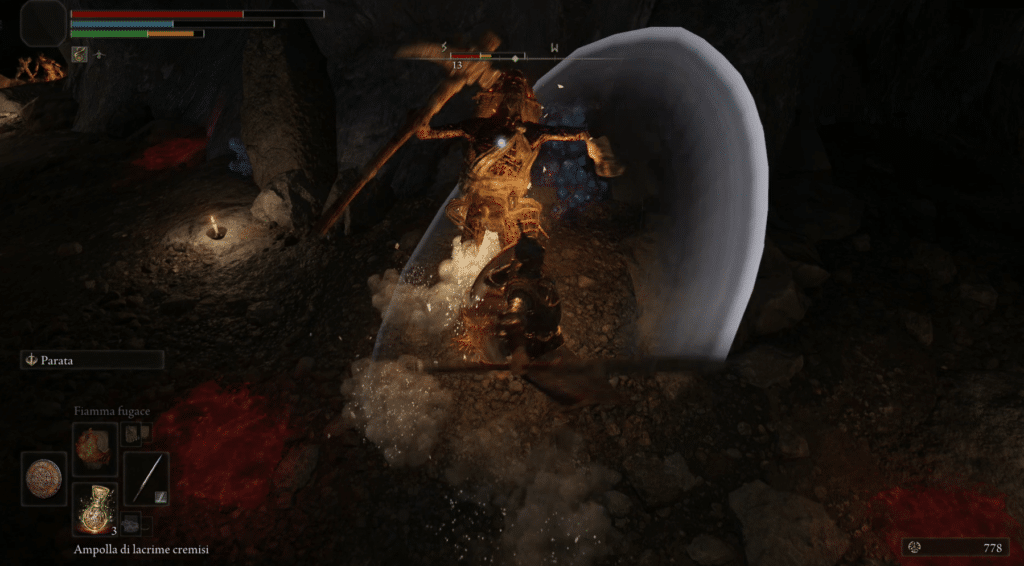
Light and thoughtful attacks then return, which can be carried out by pressing R1 and R2 (our test took place on PS4 and PS5, so we will keep the configuration of the Sony controllers as a reference), the defense with L1 and the parry or the assigned skill to the shield with L2. Adding to the game economy is an attack running with R2, the jump, which is done by pressing X and the squatting position, which is assumed with L3.
Through the jump we will be able to carry out a special attack with R2, which not only inflicts a lot of damage, but is also extremely useful for breaking the enemy posture, which once broken will leave your opponent exposed to a critical attack. This mechanic, borrowed from Ax, will prove to be really useful for dealing with some particularly tough enemies, since aiming to break the posture, rather than dealing direct damage.
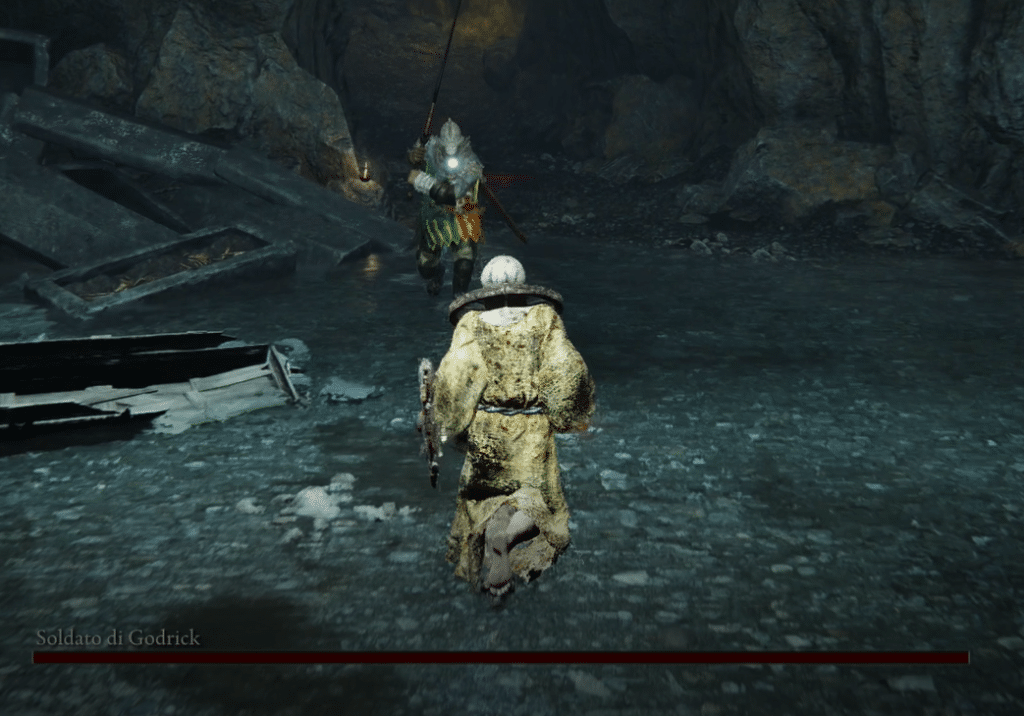
In the same way, stealth also takes on value, since approaching some enemy camps, often and willingly, is equivalent to a sound defeat. Always to break the enemy’s posture, however, we also have a new move called Defense Counterattack, which allows you to make a powerful blow by pressing R2 immediately after blocking an opponent’s hit, an element that makes the game of weapon and shield much less passive than in the past.
We also report that the weapon movesets now have many more animations for combo, greatly increasing the variety of attacks.
Welcome to Sepolcride
After spending about a quarter of an hour in this introductory session we finally decided to leave the crypt to take a look at what awaited us in the session. Open World. After opening a heavy iron door, we immediately found ourselves a Sepulchrid, or what appears to be the first region of the Interregnum, bounded by the rest of the map by the Storm Storm Castle, where we will probably face or the first lord in the finished game.
Here we met a nice NPC who wished us to go and die in some ravine. Apart from that we got to rest at a Place of Grace, the equivalent of bonfires in Elden Ring and being completely speechless in front of the vastness of the world around us, to the point where we initially felt lost as to where to go.

We therefore decided to aim for the rider on horseback in front of us, who naturally slaughtered us in a few strokes. We postponed our appointment with destiny and continued our exploration of the area, finding a merchant who introduced us to several very important mechanics of Elden Ring, absent in the other FromSoftware games: the Crafting and the Spiritual Summons.
Spiritual Crafting and Summons
Two completely new mechanics are Crafting and Spirit Summons. Let’s start with the Summons: the latter can be purchased from some merchants or found as rewards within the various dungeons that dot the game world, and work like gods real consumable items, somewhat in the same way that arcane objects were handled in Bloodborne.
Once used, consuming FP, we will be able to use the spirits as minions, which will help us to inflict damage or manage the aggro of large groups of enemies. In the test we had the opportunity to try a pack of wolves, a sorcerer and a bunch of soldiers, ready to throw themselves at our enemies without any hesitation. The most useful was undoubtedly the wolf pack, as it combines speed and attack power: the perfect partner for a magical class.
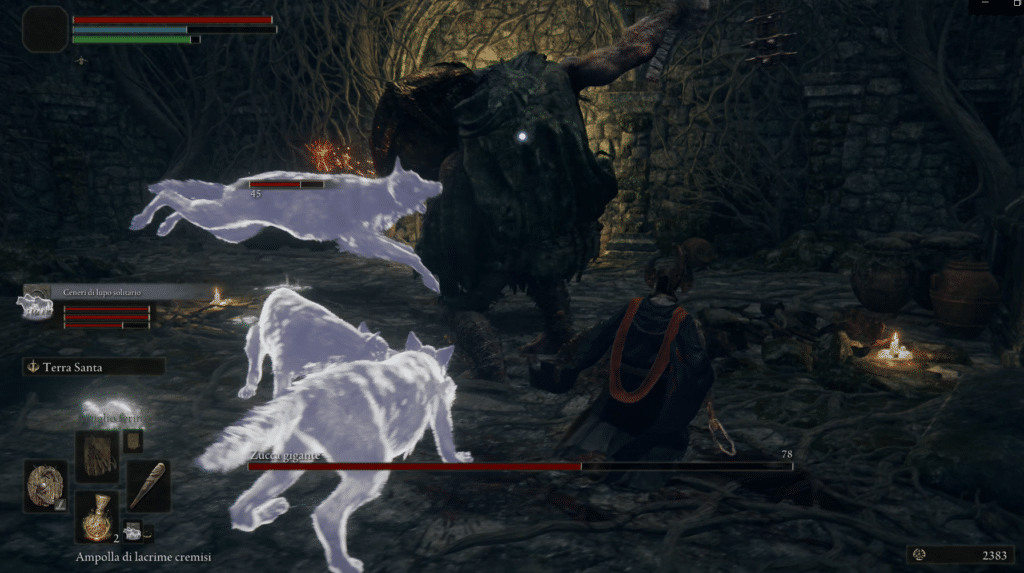
Using these summons against some enemies is really effective, that’s why FromSoftware decided to limit its use to some specific areas, recognizable thanks to the icon of a monument that appears on the left of the screen. That said, almost all bossfights can be tackled using spirits, which among other things we can heal through miracles, if we could use them.
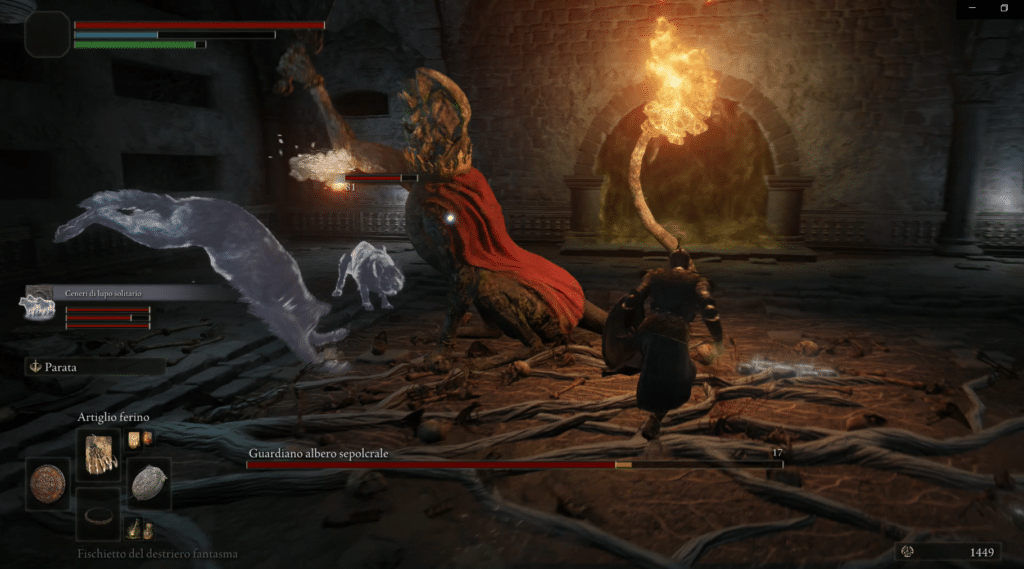
Crafting, on the other hand, is much easier to approach, since once you have obtained the key object necessary to unlock it, it will appear in the game menu, allowing us to create a series of very useful objects on the fly. Fortunately these items are almost all secondary to the core gameplay of the game. They can help, of course, but they are by no means essential to better face the game world, at least in the phases we faced in the beta.
It must also be emphasized that finding raw materials is very simple, and just reload a certain area via quick travel to make them all reappear, a sign that FromSoftware wants to make the mechanics a pleasant addition to the gameplay without making it particularly central. A choice that we understand, considering how much mechanics of the genre can degenerate in an open world.
Straddling a checkpoint and a dungeon
After this long introduction to the basic mechanics of Elden Ring, we finally set out to explore the vast map we have been allowed to travel on. It wasn’t long before we met Melina, the virgin who will allow us to level up and who has given us ours mount, which allowed us to reach places that were previously totally inaccessible.
One of the best ideas put into play regarding our steed is the possibility of double jumps on the saddle, which allows for surprising mobility at times. Arriving in a secret location after making a series of seemingly impossible jumps is a sensation that greatly enhances the focus on exploration of the Souls, bringing the sense of gratification to its maximum potential.
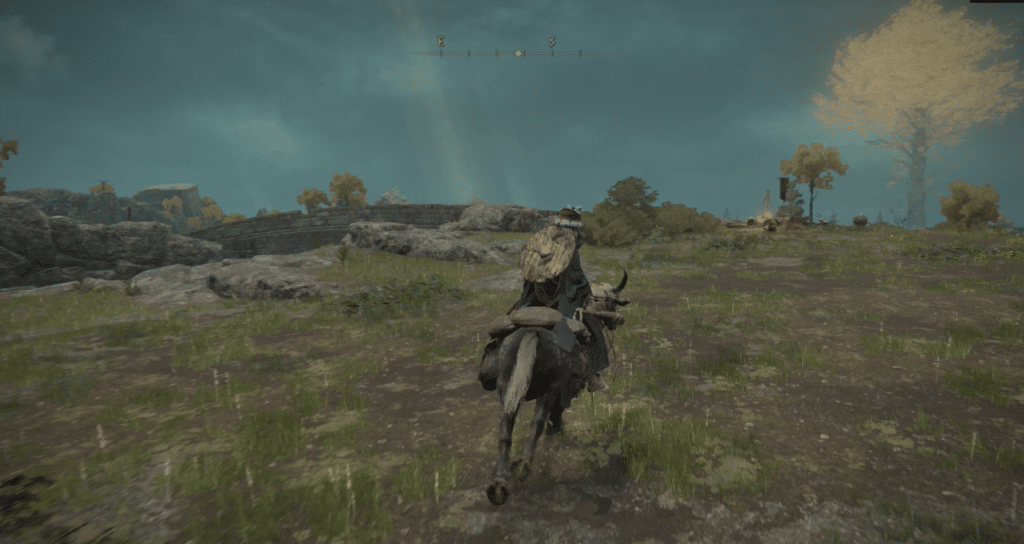
Slightly less brilliant, in our opinion, is the fighting on horseback, which although full of unique interactions and animations designed ad hoc for different weapons, is often inaccurate and sometimes cumbersome, especially when fighting against very large opponents.
For the rest, traveling through the Interregnum is really enjoyable, and the events we will encounter are many and varied, many more than we would have expected in an open world. To be clear, Sepolcride is a map that overflows with secrets, hidden streets and optional bosses, all waiting for a player curious ready to stick his nose around every corner.

During our first hour of exploration we have left out many points of interest, precisely because we are not used to From the approach to the game design of an open world: the software house from this point of view has not spared itself at all and the feeling is that of being in a large map that came out of a Souls, with many mini maps equally curated inside.
The idea of not inserting loads between the interiors and exteriors (sometimes disguised as elevators to be honest) is very apt, the only flaw is found in some of these dungeons, which are configured as little more than arenas in which to fight the boss on duty. This is not a defect in itself, however, given that such bossfights are almost always stimulating and inspired.
Variety is the watchword in the Elden Ring network test
Let’s face it right away: the great variety in equipment that we found in this Elden Ring network test is likely not to be matched in the finished game, at least not in this part of the game. The beta in fact seems built specifically (and rightly so) for allow the player to range as much as possible between the various classes of weapons and spells present in the game, and it is realistic to imagine that in the final version they will be more scattered within the Interregnum.
That said, the diversification and layering of our arsenal still surprised us positively. On the one hand we find the weapons, which all have a rather varied range of moves and live up to expectations, also thanks to a quantity of animations that had practically never been seen before in a Souls. On the other hand we have the addition of War Ashes, who take the place of weapon art viste in Dark Souls 3.
These special moves can be achieved in various ways, such as through the defeat of a boss or in a particularly hidden chest, and can then be changed as we wish at the places of grace. There are some special weapons whose weapon arts cannot be changed, but in general the level of customization is nothing short of mind-blowing.
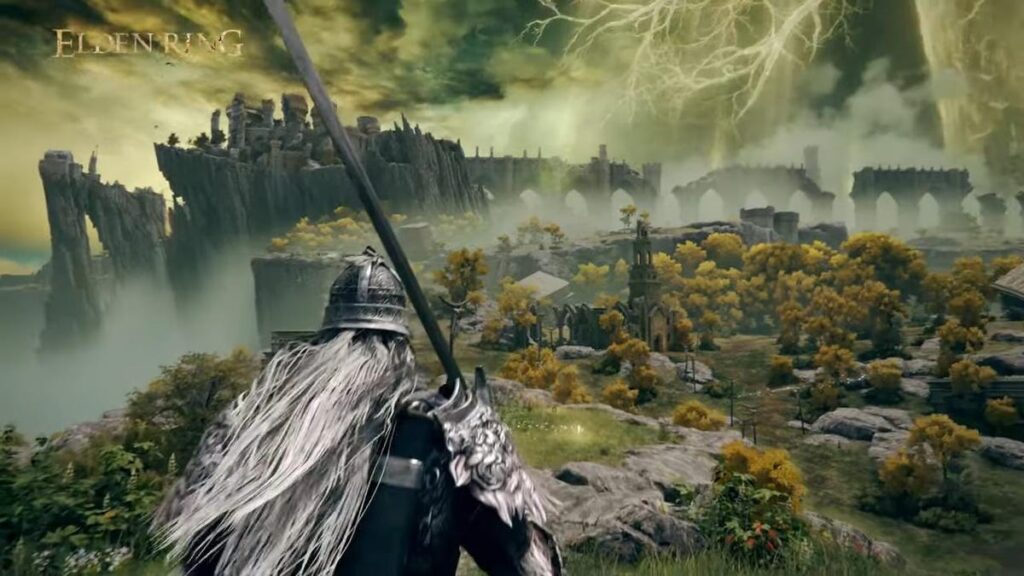
Not only: changing War Ash will also change the scaling of our weapon, what will allow us to adapt our offense tool to the characteristics that our build exploits. The other side of the coin is that if we want, for example, a broadsword capable of drawing attack power from our magic level, we will also have to come to terms with the fact that the weapon art that will allow us to implement this process could we don’t like us.
For this reason the effectiveness of this new system, which replaces the old infusions, will be played on the variety of War Ashes present in the game, and how much the latter can change our …













Leave a Reply
View Comments